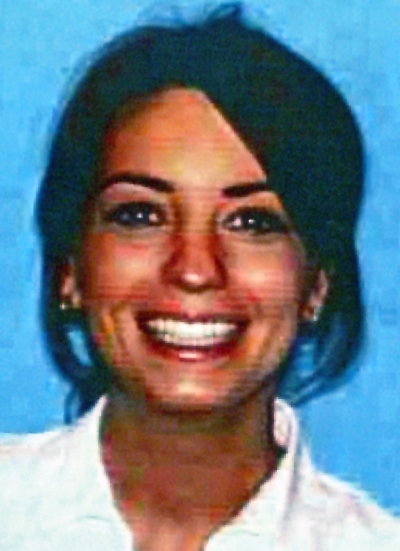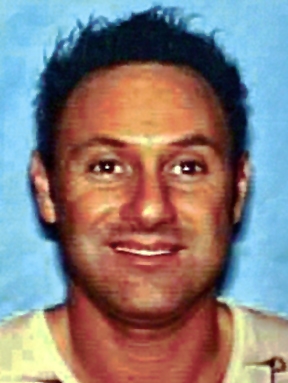Editor's note: Follow the trial on Twitter. Go to twitter.com/#!/paw_court.
Federal arson investigator Barbara Maxwell said she detected a heavy smell of gasoline as soon as members of her team began lifting the body of Jennifer Schipsi, a Palo Alto resident who was found in a burned residence on Addison Avenue on Oct. 15, 2009.
Maxwell, a special agent for fire investigations at the Bureau of Alcohol, Tobacco, Firearms and Explosives, arrived at the scene the morning after a fire destroyed the Addison Avenue cottage -- three days before Schipsi's boyfriend, Bulos Zumot, was arrested for arson and murder.
On Tuesday (Jan. 4), the second day of Zumot's trial in Santa Clara County Superior Court in San Jose, Maxwell said evidence from the scene led her to the conclusion that the fire was not an accident.
"We determined the fire was intentionally set in incendiary manner," Maxwell testified.
Maxwell said a lump of melted plastic found near the victim's right hip was determined to be a two-gallon gasoline can. Other evidence included the unusual position of the victim's body and the gasoline smell, which was particularly strong in the area of the victim's hair.
Maxwell said she believed Schipsi was unconscious at the time of the fire. Firefighters found the body on the edge of bed, one leg bent behind her back. Normally, fire victims who are conscious at the time of the fire are found trying to escape the flames, she said.
Fire investigator Dennis Johnsen and his partner, Rosie, an accelerant-sniffing dog, also smelled gasoline the morning after the fire. Johnsen, a battalion chief at the Santa Clara County Fire Department and coordinator of the task force's investigation on Addison Avenue, said Rosie "alerted" at several portions of the cottage after smelling gasoline.
She demonstrated a particularly "strong alert" near the bed where the body was found, by dropping her head near that part of the room, Johnsen said.
Zumot's attorney, Mark Geragos, had tried at earlier hearings to discredit Rosie by pointing to lab reports from the ATF that did not detect accelerant of any sort on Zumot's sweatshirt, jeans or socks. The dog had previously alerted at these items of clothing.
Geragos sarcastically referred to the canine on Monday as "Rosie the Wonderdog" and pointed to the ATF records as indication of his client's innocence.
Geragos brought up the lab results again Tuesday morning and suggested to Maxwell that the ATF's determination that there was no accelerant on most of Zumot's clothing should indicate that he wasn't responsible for the fire.
Zumot, who shared the Addison Avenue cottage with Schipsi and who owned Da Hookah Spot on University Avenue, was arrested four days after the fire. Police accused Zumot, 36, of killing Schipsi and burning the house to cover up the evidence.
Police said the two had a volatile two-year relationship and had fought the night before the fire.
Related stories:
■ Cell phone takes center stage at Zumot trial
■ Boyfriend arrested in Palo Alto death of Jennifer Marie Schipsi




Comments
another community
on Jan 5, 2011 at 2:49 am
on Jan 5, 2011 at 2:49 am
As a former team leader on Fire Investigations in the UK, I would say that it is not unusual for the dog to be able to detect gasoline when instruments in a lab can't. The dog's nose is around 10,000 times more efficient than ours, and probably ten times more efficient than our most sensitive equipment. I had a case where the dog ignored the samples we had set out and walked straight to an onlooker, giving a very definite hit. Enquiry revealed that the person - a policeman - had actually filled his tank an hour earlier. No trace of gasoline could be found on his clothes by the lab test, however. That said, the dog cannot be cross examined and its evidence must, in the UK, be supported by a positive lab report.
In these circumstances a 'blind' test before the court might be acceptable as evidence the dog is detecting gasoline on someone, though you would usually have to call for volunteers from the public and give one of them an item that had been 'marked' and then allowed to evaporate for a period before bringing the dog in for the test. I have personally seen dogs 'hit' on items that my nose could detect nothing on - but the lab reports confirmed the presence of 'a hydrocarbon substance.'
I suspect though, that the Defence Attorney will be very reluctant to allow such a test in this case as it might influence the jury!
Stanford
on Jan 5, 2011 at 7:48 am
on Jan 5, 2011 at 7:48 am
i followed this case since its start, hard to believe in this day of technology, we went to the moon, space, other planets, we have machines at airports that can see your privates, x ray machines that can see through you, you can do MRI and see every part inside you, and so much i can't mention and don't even know about, and here you say a dog is more accurate than and machine that can detect the smallest amount of substances, dude, which planet do you live on, KRIPTON!!!!! by the way, DA would like you to believe that gasoline disappears in few days and vanishes in thin air, POOF its gone, ask any chemist and he would laugh in your face, get your facts straight before you comment on something you don't know about.
if you go to the doctor and he says you smell like you have a cold, but lets do a blood test and it comes back you have the flu, are you going to tell him his lab made a mistake!!!